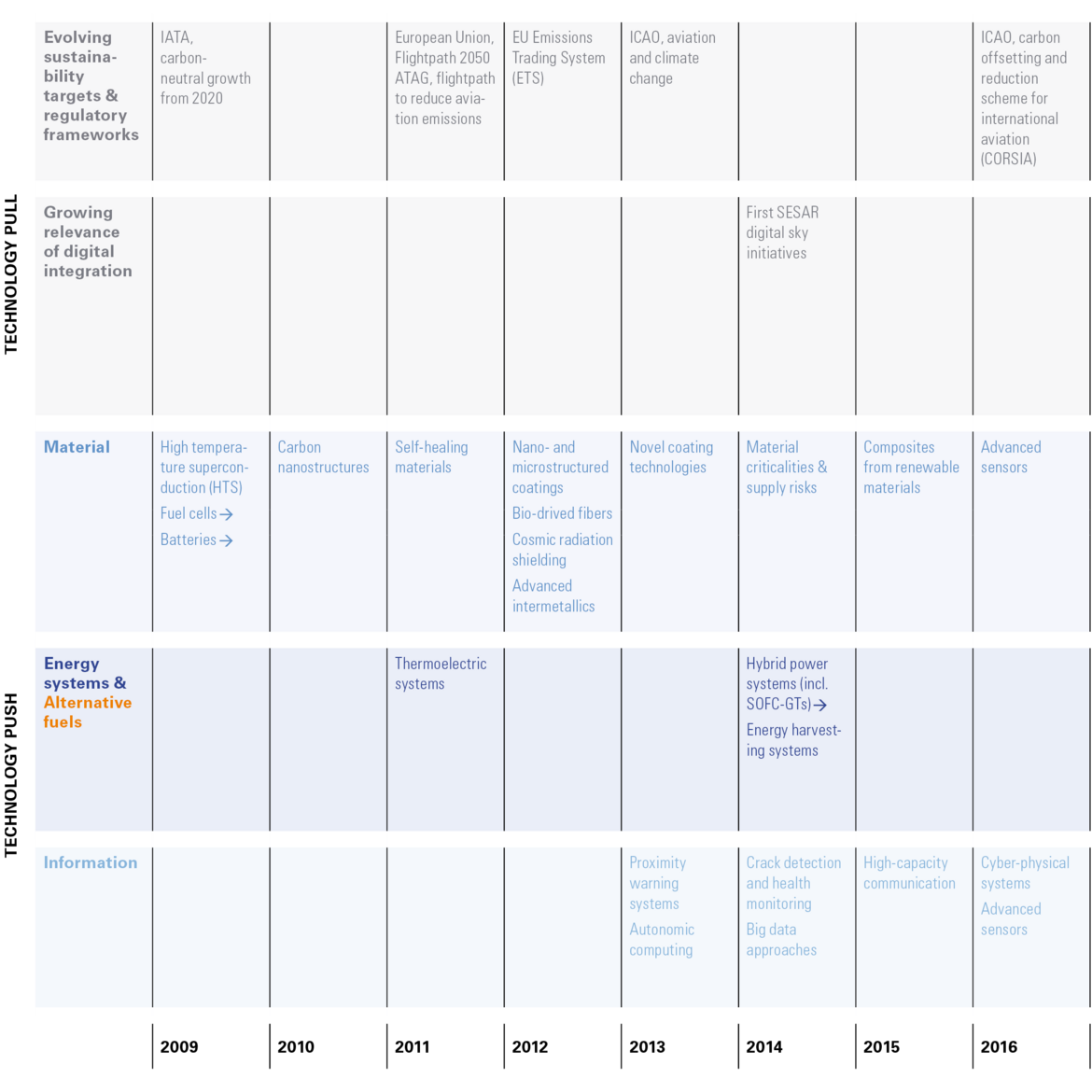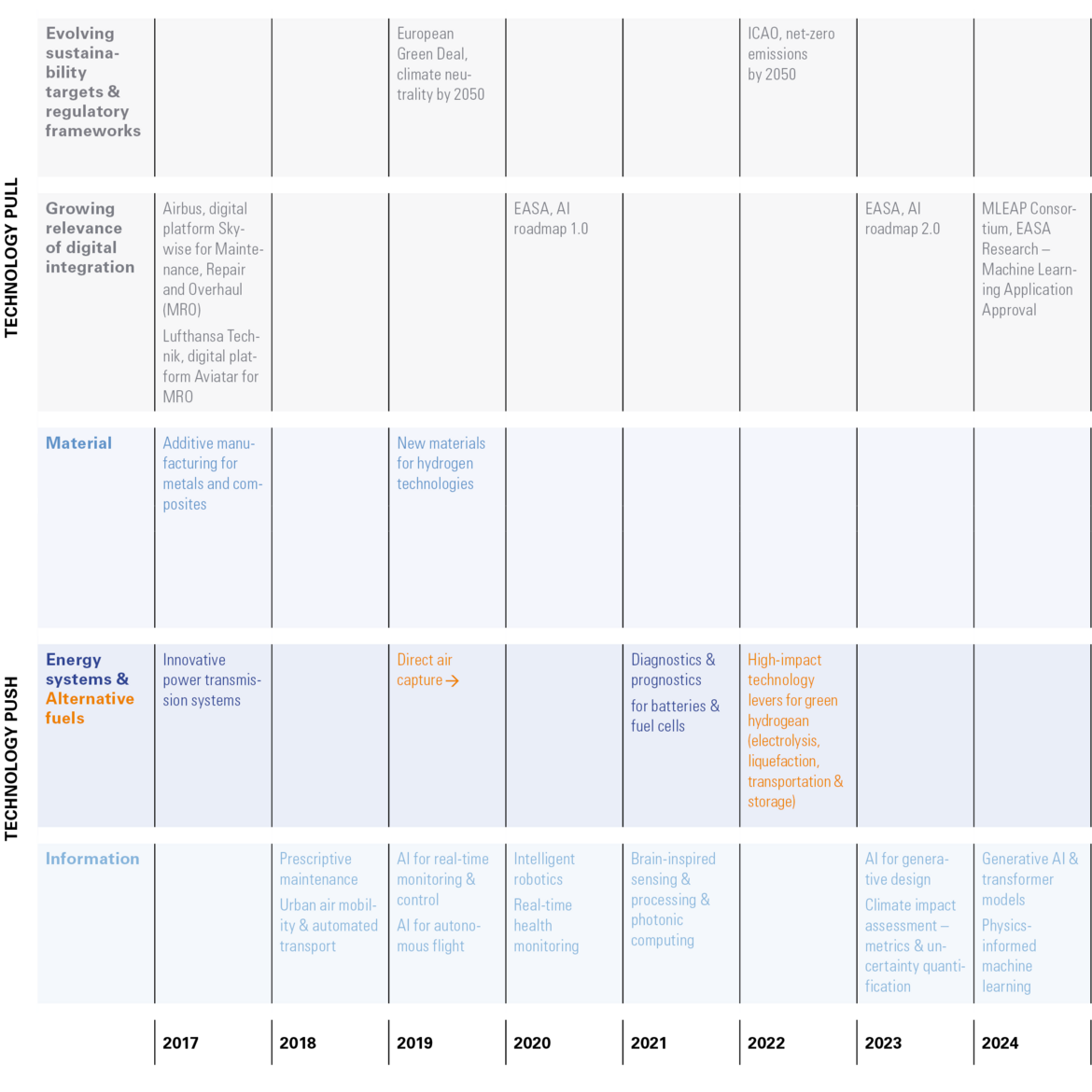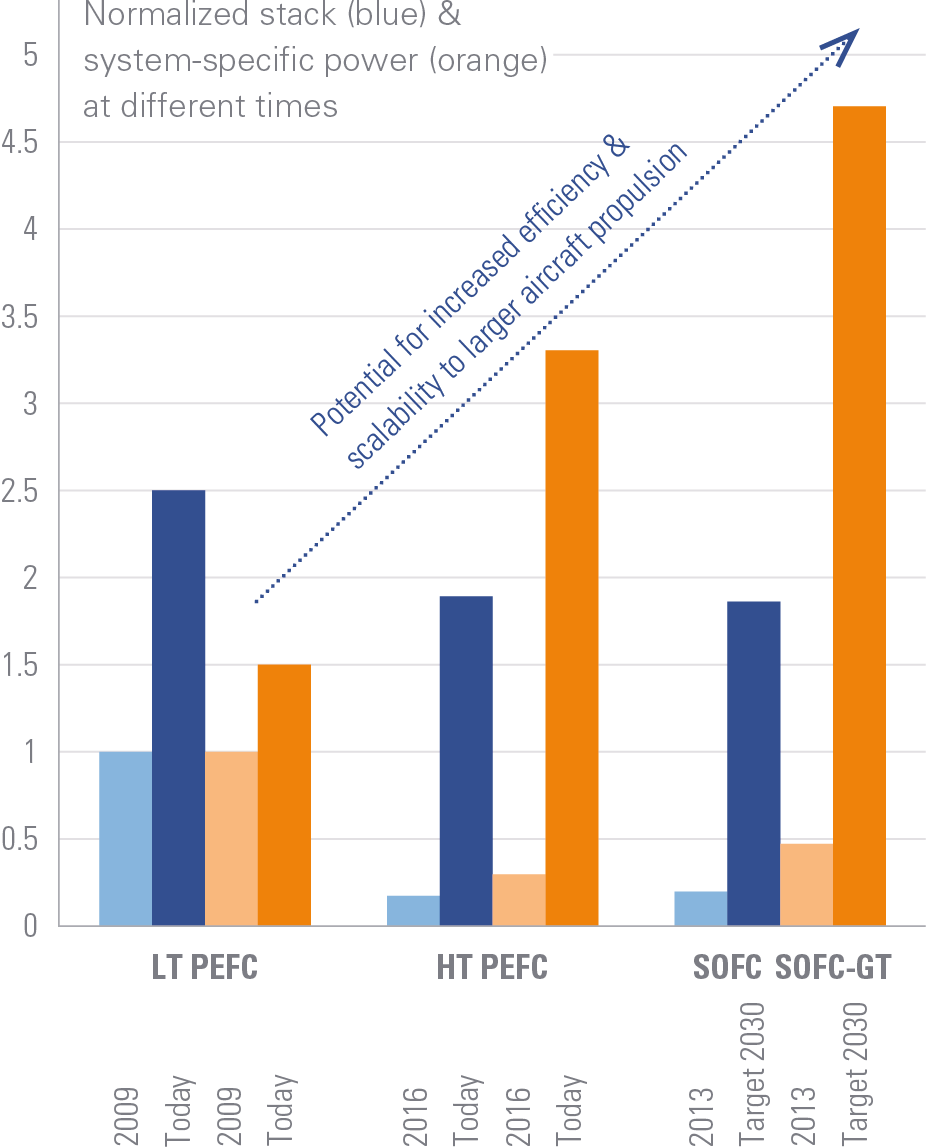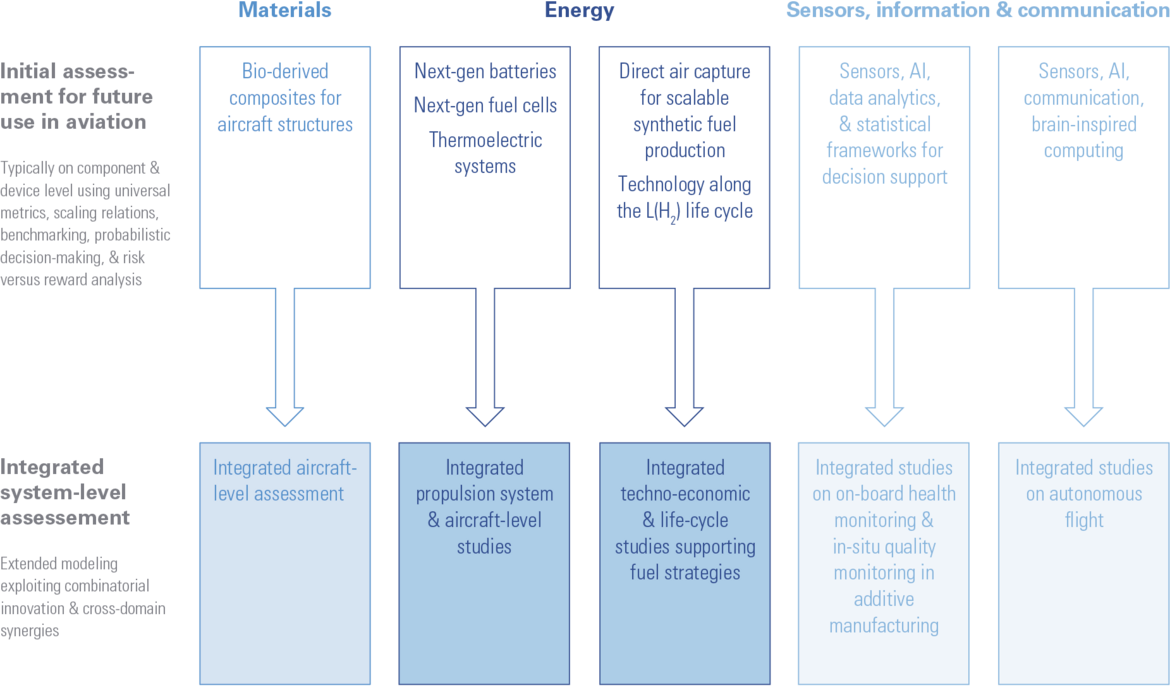The Technology Radar was established for early identification of research breakthroughs in a broad technology spectrum, including materials, energy, information, and sensors. Using scientific methods and an interdisciplinary team, it evaluates long-term potentials for aviation innovation to guide the development of sound overall concepts.
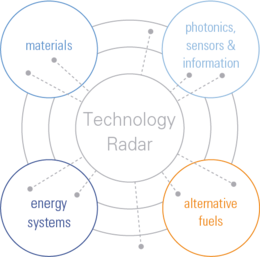
Key success factors included anticipating future demands – such as integrating performance optimization with sustainability goals like the transition to renewable resources and climate neutrality – and aligning these needs with emerging technologies assessed through forward-looking metrics to identify step-change advances.

Materials
Early studies of bio-derived composites for light aircraft structures made from renewable materials, conducted a decade ago and now gaining traction, revealed their potential to reduce weight, improve fuel efficiency, lower life-cycle emissions, and enhance supply chain stability by decreasing fossil resource dependence. Fostered by earlier analyses on material criticalities and supply risks – now gaining more attention – this recognition exemplifies the timely identification of multi-faceted, future-oriented innovation potentials.
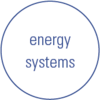
Energy systems
Anticipating the necessary transition to renewable energy initiated early evaluation of electrochemical
technologies as key enablers of zero-emission propulsion. Since 2009, fuel cell analyses have demonstrated a trajectory toward higher performance and scalability for larger aircraft. Advances in materials and designs supporting higher operating temperatures in polymer electrolyte fuel cells (PEFCs) address durability challenges and facilitate thermal and water management, allowing for system-level advantages.
In 2013, early analyses explored enhancing the efficiency benefits of solid oxide fuel cells (SOFC) – operating at far higher temperatures than PEFCs – by utilizing their waste heat in gas turbines (GT) within SOFC-GT hybrids to increase overall power output. While limitations in SOFCspecific power and thermal stability initially confined studies to auxiliary power units, advances in materials, design, and manufacturing have since been assessed. These efforts now inform system-level studies of SOFC-GT hybrids under the Horizon Europe project HYLENA, shaping ultimate perspectives for short- to medium-range aircraft propulsion with significant potential for climate impact reduction.

Alternative fuels
Early consideration of liquid hydrogen (LH2) as an energy carrier explored critical synergies such as its use as a cooling medium for high-temperature superconductors enabling electric propulsion in larger aircraft (2009) and its potential to shield crew and passengers from cosmic radiation via large tanks, quantified in 2012. Evaluated key advances along the LH2 life cycle and in direct air capture (DAC) for scalable synthetic fuel production have guided integrated studies, supporting sustainable fuel strategies.

Information & sensors
Recognizing the role of technology convergence in advancing intelligent, connected, and adaptive systems, cyber-physical systems (CPS) were first analyzed in 2016 as enablers of efficiency, resilience, and safety amid rising system complexity. Now widely adopted at the industrial scale, CPS set new standards and enable servitization by integrating physical processes with algorithms and communication networks to monitor, control, and optimize them. Advances in sensing, AI, communication, and brain-inspired computing – assessed as drivers of energy-efficient, CPS-enabled real time decisions – have guided system-level studies in health monitoring, manufacturing, and autonomous flight.
Glossary: IATA International Air Transport Association, ICAO International Civil Aviation Organization, ATAG Air Transport Action Group, SESAR Single European Sky ATM Research,
EASA European Union Aviation Safety Agency, MLEAP Machine Learning Application Approval consortium, MRO Maintenance, Repair and Overhaul, SOFC-GT solid oxide fuel cell – gas turbine,
AI artificial intelligence
Potentials emerge at the intersection of technology pull – shaped by evolving sustainability demands, such as meeting aviation’s climate targets and leveraging digitalization – and technology push, driven by research advances.
Normalized specific power metrics of different fuel cell technologies over time
Progress in materials, designs, and manufacturing facilitates the use of efficiency benefits from higher operating temperatures, enabling scalability in aircraft propulsion from 150 kW since the first analysis in 2009 to prospective multi-megawatt power outputs, with SOFC-GT hybrids offering promising efficiency gains through waste heat utilization.

